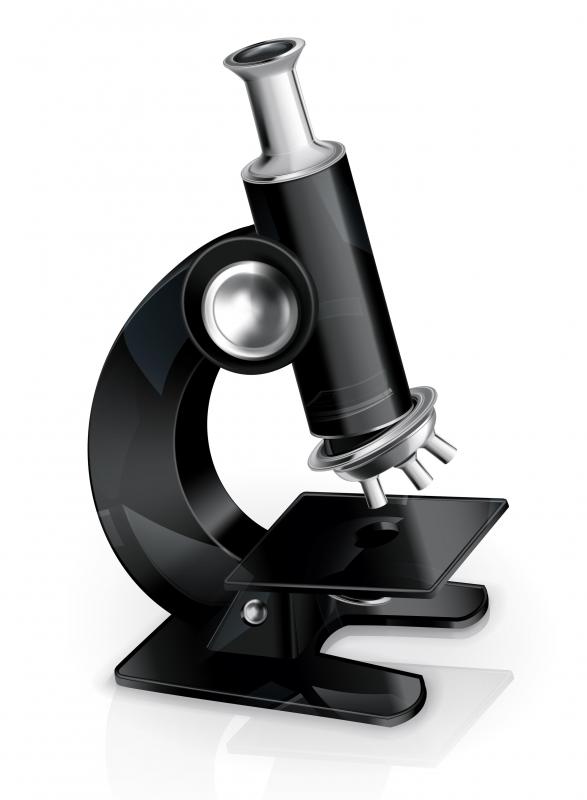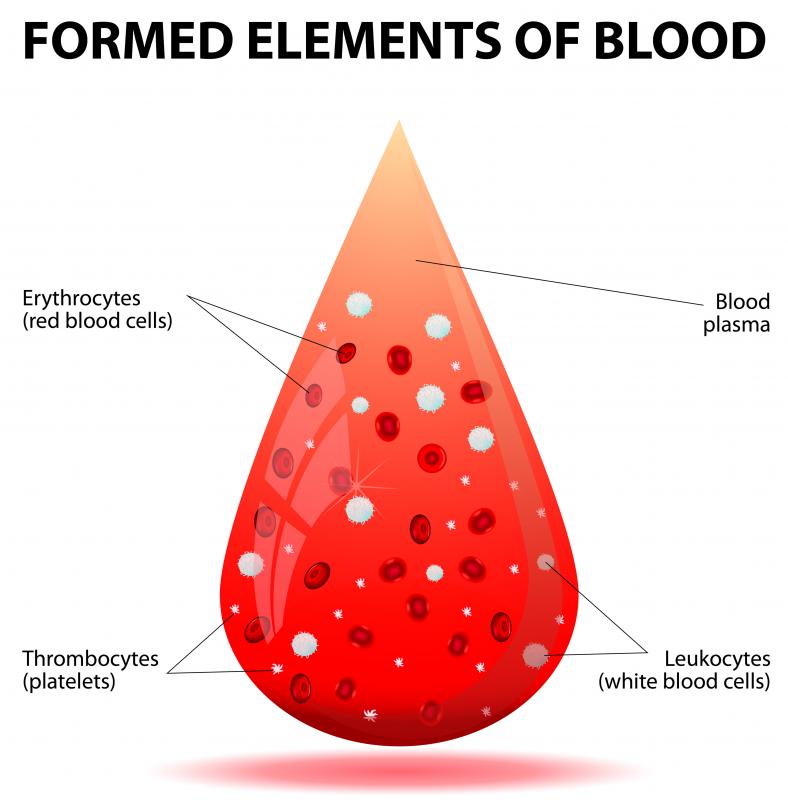At TheHealthBoard, we're committed to delivering accurate, trustworthy information. Our expert-authored content is rigorously fact-checked and sourced from credible authorities. Discover how we uphold the highest standards in providing you with reliable knowledge.
What is a Polymorphonuclear Leukocyte?
A polymorphonuclear leukocyte is a type of white blood cell, with "leuko" meaning "white" and "cyte" meaning "cell." The polymorphonuclear name derives from the common appearance of the lobed nucleus of the cell, which appears to be many nuclei stuck together. A polymorphonuclear leukocyte is also known as a granulocyte because of the grainy nature of the cell's cytoplasm.
The polymorphonuclear leukocyte group is divided into three types. These are basophils, neutrophils and eosinophils. These types of cells are named for their staining properties when the cells are stained so they can easily be seen under a microscope. The basophils are stained by basophilic stains, and the eosinophils are stained easily by a chemical called eosin. The neutrophils do not take up either acidic or basic stains particularly well and are, therefore, identifiable by their mild staining by both types.

Polymorphonuclear leukocytes, which make up around 70 percent of all white blood cells, are produced in the bone marrow as part of the immune system. The cells that manufacture the cells are called myeloblasts. The polymorphonuclear leukocytes pass through stages of growth when they are called myelocytes and metamyelocytes before becoming leukocytes. Cells in these early stages of growth do not respond the same way to staining as more advanced cells do, and can also be recognized by differences in nuclear structure.

Neutrophils make up about 60 percent of white blood cells and are roughly twice the size of a red blood cell. Neutrophils contain lysosomal enzymes in their cell granules. Lysosomal enzymes are substances that break down bacterial cells. When the immune system begins the process of inflammation to combat infections, the neutrophils move from the bloodstream to the affected area. They congregate there and recognize bacteria by the antibodies the immune system attaches to the bacteria as a marker for destruction.

Eosinophils are less common than neutrophils, and make up less than 6 percent of the white blood cells found in the bloodstream. Their function is not well known, but they do multiply in response to parasite infection or allergic reactions. Basophils are even less common than eosinophils, making up less than 1 percent of white blood cells. Their function is to trigger the process of inflammation in a similar role to tissue mast cells. Basophils, eosinophils and neutrophils are all about the same size.

Despite the name polymorphonuclear leukocyte, the cells do not necessarily contain the multi-lobed nucleus at all times. Immature neutrophils have a nucleus in the shape of a band, and eosinophils and basophils may also have band-shaped nuclei. Eosinophils may also have only two lobes on their nucleus.
AS FEATURED ON:
AS FEATURED ON:















Discuss this Article
Post your comments